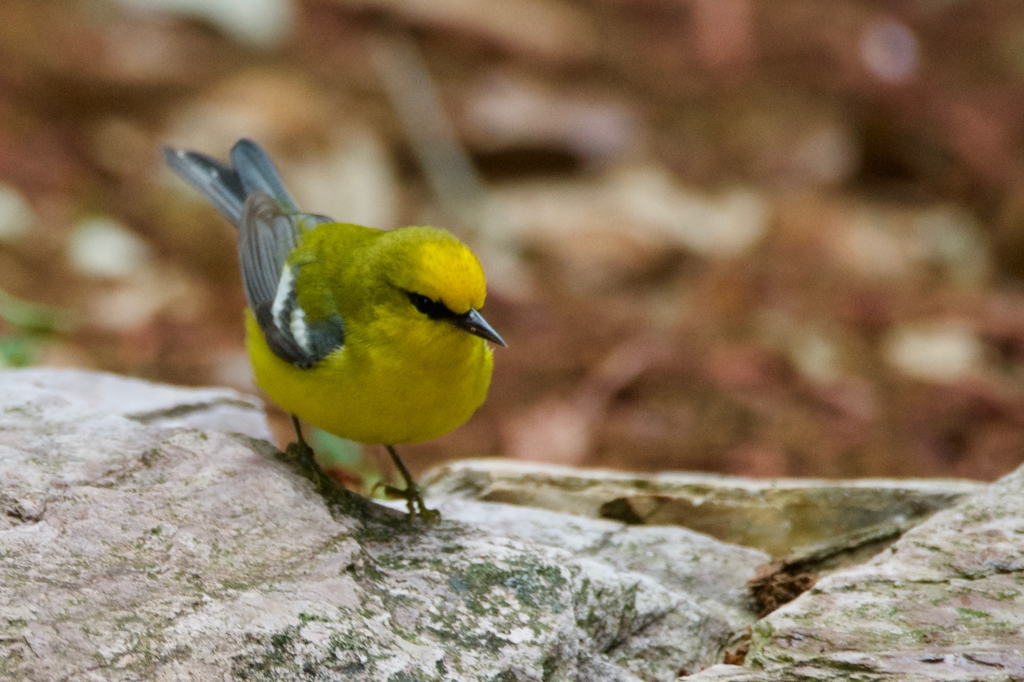Migrating Warblers – Fallout at High Island, Texas
My husband, Steve, spent four days at High Island in Texas during the peak of warbler migration here in the south. It seems as though the last several years I’ve had a big project at work in April that prevents me from joining him, so I asked him to write today’s blog post below, which is a report from that trip. Prepare to be envious. And those up north–you’ll be seeing these guys come your way.
Spring migration on the Upper Texas Gulf Coast is spectacular with millions of neo-tropical songbirds returning from their wintering grounds in Central and South America. To reach their northern breeding range in the United States and Canada, many of these migrants fly directly across the Gulf of Mexico and make landfall along the coast of Texas and Louisiana– an astounding distance of about 650 miles (or 1,000 kilometers).
Buoyed by southerly winds, millions of hummingbirds, flycatchers, swallows, thrushes, vireos, warblers, orioles and many other passerines makes this arduous non-stop flight leaving the Yucatan Peninsula at nightfall and arriving some 12 to 16 hours later on the Upper Gulf Coast of Texas in the late morning or early afternoon the following day. If the winds are favorable the songbirds will sail right pass the inhospitable coastal dunes and salt marshes and northwards to the forests of east Texas where they will seek shelter and food to recover from their exhausting flight.
However, if there is a cold front with northerly winds and rainy weather the migrants are forced to make landfall at the nearest suitable location. High Island is an ideal location for these migrants. As a result of its unique geomorphology, situated atop of a salt dome a mile wide in diameter, High Island is 20 to 30 feet higher than the surrounding dunes and salt marshes and consequently supports many large trees and a dense undergrowth where the neo-tropical songbirds can seek refuge from the stormy weather. Such adverse weather conditions cause the birds to drop out of the sky creating one of the great spectacles of the birding world known as a fallout. Such conditions existed during the third week of April this year. A fallout at High Island, Texas is what birders yearn for. And I was there for it.
High Island is renowned for its spring warblers, and every year thousands of birders from across North America and beyond descend here in keen anticipation to spot these living gems. These photographs were taken on Saturday, April 17 and give a small taste of this bounteous feast for the eyes.

The Blackburnian Warbler is a living gem. This striking warbler just arrived from its non-stop flight from the Yucatan, Mexico. He came from his winter grounds, which range as far south as the highlands of Ecuador. His final destination is the boreal forest of northern Canada.
Battling northerly headwinds, he was heaving with exhaustion when he alit on a shrub ten feet from me where he promptly stuck his head under his wing and fell fast asleep. Awakening twenty minutes later and revived after eating a few caterpillars and taking a bath to rinse off the salt spray from his journey across the Gulf of Mexico, he was hoping on the ground just a few feet in front of me.

The Worm-eating Warbler lives up to his name and searches for worms and insects amongst the leaf litter of the forest floor as well as tree stumps as you see in the photo above.

As child of eight I fondly remember seeing my first Hooded Warbler at Point Pelee National Park in Ontario, Canada. I always get a thrill seeing them, even as a child of 61.

The water feature at Hook Woods is operated by the Texas Ornithological Society. The sight and sound of running water acts as a magnet drawing in thirsty songbirds from the woods.

Such a Beauty! The Prothonotary Warbler is named after the yellow color worn by the Papal Clerks of the Vatican.

Although a few hardy Common Yellowthroats winter in Texas, most winter further south in Mexico and Central America.

The star of the show was this handsome Cerulean Warbler. A rare and much sought-after bird, his appearance was cheered by ooohs and aaahs from the gallery of birders.

Another favorite, the Chestnut-sided Warbler fresh from his wintering grounds in Central America.

This Blue-winged Warbler is possibly on his way to the southernmost part of Ontario, Canada, which is the northern limit of its range.
Below is a screen capture of a post on Facebook by the Houston Audubon Society for this day, April 17. Lisa was following “High Island – Spring Migration” each day and sending me the reports so I could compare notes. 30 Warbler species observed at High Island – a most impressive list!

seen for Saturday April 17, 2021
Happy birders and bird photographers experienced this extraordinary fallout at High Island.


The Prothonotary Warbler was my favourite.
LikeLiked by 1 person
He’s my favorite, too.
LikeLiked by 1 person
What a fantastic day! I miss seeing these beauties – the PNW has only a handful of warblers. Maybe I need to think about a trip to High Island next April. Thank you so much for the excellent report and beautiful photos.
LikeLiked by 1 person
You should definitely plan for a trip to High Island in April! There’s also the rookery there for Roseate Spoonbills and Great Egrets. And the Bolivar peninsula has great shorebirds, too.
LikeLiked by 1 person
Thanks for that!
LikeLike
These are wonderful little beauties!
LikeLike
There’s something about all that beauty that travels through each Spring, which brings me such happiness. 🙂
LikeLiked by 1 person